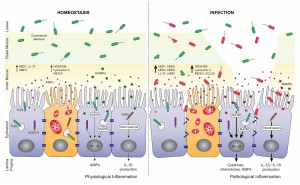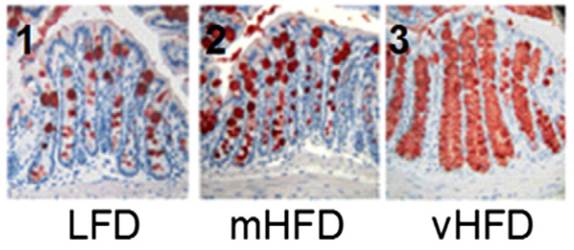The Perfect Health Diet ebook sale continues! Although the PaleoDork book event is over, Scriber liked your response so much that they’ve decided to contine to sell the Perfect Health Diet Kindle edition for $2.99 for another two weeks. Thank you, Scribner!
Unfortunately this is only valid for North American buyers, but if you’re in the UK, Australia, or elsewhere, simply change your Amazon address to a US location and you’ll be able to buy the US edition for $2.99. It’s almost identical save for the units (English, not SI).
We have much to be grateful for this Thanksgiving, not least the fact that readers continue to heal themselves on our diet. It’s always nice to hear a success story. Here are a few recent messages.
First, Dave has recovered from Behçet’s Disease and some other ailments:
Hi Paul
I started on a Paleo style diet as I wanted to ease my problems with Behçet’s Disease. I probably suffered for 28 of my 52 years with this auto-immune disorder and in the last 5 years it was hell on earth. I followed all the diet guidelines from my doctor and the health professionals and none of it worked. I took drugs until I almost rattled; no real help.
I went on Google to see if a different diet could help me. After a month of near 24/7 research I found many references to Paleo so decided I should try. At first it was only 80% Paleo as I made the adjustments. I reached almost 100% but allowed myself the odd day off (Birthday’s etc) to preserve my sanity. I read Mark Sisson’s book Primal Blueprint and that allowed me to change the diet slightly. I read books by Loren Cordain, Robb Wolf to name but a few.
I then found your book and was so pleased to read about safe starches. That was the hardest thing for me to deal with. I have an Indian/Indonesian heritage so white basmati rice was my favourite with the curries I ate. I have also come to love cream again, full fat organic which tastes wonderful. I was already a big fan of coconut oil and milk, I have about two tablespoons of virgin cold pressed coconut oil each day.
The difference? I was not trying to lose weight but I lost 16 kg in 4 months. My only exercise was steady walking which I built up form 1-1.5 miles to 8-9 miles per day. My blood levels were perfect whereas before they were all over the place. The change in blood work only took a month and my doctor was so shocked she ordered another full test. The next results were the same but she refused to believe me when I told her of my dietary change. When she still refused to believe me, I changed doctor!
The joint pain in my shoulders and neck has gone totally, my wrists were really painful and they are normal. I just have a bit of tendonitis in my elbows but I am working on strengthening the connective tissue to help that. My skin has cleared, no more folliculitis and just one ulcer in the last 6 months! No more headaches, no more IBS or nausea. No more “brain fog” and just the odd fatigued day.
I sleep like a baby for 8-9 hours, I have plenty of energy and awake each day feeling fresh and raring to go. I am starting to see my abs; something I was known for in my youth. People look at me and say “Wow, what have you been doing?” Many don’t believe me, they say I have the “perfect genes” and “I’m lucky” as it won’t work for everyone! Well my wife joined me and she has lost around 10 kg in weight and she’s not been as strict as me! Our DNA has changed less than 0.25% in hundreds of thousands of years but I am lucky because apparently I have changed my DNA….and so has my wife! Oh, my friend had dangerously high blood pressure so she asked me what I was doing and if it would help her. She looked sceptical at first but then I told her I am living proof. She tried it and lost 14lbs in a month. Her blood pressure is now normal – she is both stunned and overjoyed!
So my heartfelt thanks to you, I wish you and your loved ones health and happiness.
Kind regards,
Dave, Cheltenham UK
Amy has recovered from Common Variable Immune Deficiency (CVID):
Hello Paul,
First I wanted to say, I have been one of your followers for many years. I was on Intravenous immunoglobulin once a month for 6 hours a day. I was still on antibiotics all the time and could not keep healthy, and was unsure I would see my daughter graduate, she is 6. I had given up gluten, but it was not enough for my health, I still felt badly. I started eating for the most part PHD and taking supplements. As of two months ago, my body began making antibodies and I have not been sick since last march and I no longer need IVIG! So thank you so much for all you do. You make a difference.
Amy
An anonymous reader, who also sent us a fine gift of “Hormesis Coffee” (a gourmet roasted coffee), reports recovery from Post Finasteride Syndrome:
Hi Paul,
It has been a while, but I wanted to follow up with you and say thanks! You gave me some guidance (in addition to PHD) over a year ago regarding my recovery from Post Finasteride Syndrome (PFS). I really appreciate(d) the time you took to email me back with supplement recommendations and encouragement. There are many men who still have not recovered from the persistent side effects of Finasteride use. It’s truly sad. I am grateful to God and the nutritional information that I found on the Internet for my healing.
Finally, via Facebook message, K from China is doing better following our advice than he did Walter Willet’s; his blood pressure dropped 30 points in a week:
[First message:] This is the first diet I can do in China! Every diet I have tried had a lot of impossible to procure foods. My wife is Chinese ( I am American) and when she saw the picture of Shou-ching, she was suddenly interested. The fact that Shou-ching is Asian gives this diet some credibility with my wife. Before I had trouble getting her to sign on to my diets. Looking forward to full implementation. So far I have been on it for 3 days, and I feel great. My coworker even said, “man, you look healthy today.” That is before I even told him I was on a diet!
[Five Days later:] I started to follow Walter Willet’s diet about 10 years ago. I gained 75 pounds! He doesn’t allow potatoes! Or for that matter, any of my ancestral foods.
I feel that I was taken in by very bad advice. Especially now that I am struggling with very high blood pressure and other problems.
I had been having extremely high blood pressure until I started PHD, in the range of 170-180/105-116. This is on really strong meds. After being on PHD for a week, my blood pressure has lowered to in the range of 140/90 (still with meds, but I need to connect with my doctor to adjust if necessary). I also lost about 4 lbs.
This may give me a new lease on life! I want to live!
Thanks everyone for giving us so much good news to celebrate! Please have a delightful holiday.













Recent Comments